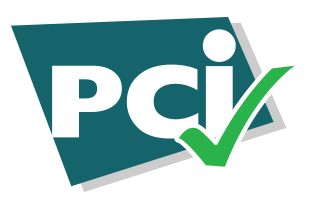
Cloud base Monetization…

Dematerialized commercial paper that stored within QRC account, and using collateral as leverage.
What are Digital Assets?
Overall, digital assets held by the Treasury Bank as dematerialized data storage in digital form for person or commercial use and comes with a distinct usage right, or distinct permission for use.
What types of digital asset does Treasury Bank Handle?
- Equity Certification
- Debt Certification
Treasury Bank store and clear pass-through certificates that is issued as current or fixed securities under UCC8-501 as digital assets and liabilities.
Pass-through Certificates are also known as a “pay-through instrument” or “pass-through securities” which is stored somewhat like a bank Certificate of Deposit CDs. Pass-through Certificates acts as evidence of interest or participation in a pool of assets that signifies the transfer or payments to interest and ownership as settlement within jurisdiction of the members from proprietary trade with Treasury Bank.
How is the Digital Asset Linked to Proprietary Trade?
Treasury Bank warehouse idigital assets as material or dematerialized commercial paper that is classified non financial or financial instruments in participants’ own account, using their own collateral as leverage instead of using banks’ CDs or treasury bank’s money. Digital Assetd are produced from two or more financial instruments as bonds and equity held in escrow or custody as electronic data.
- Bonds – obligation agreements.
- Equity – agreements receive or cash ownership
Data can be any valuable document stored in digital form with distinct equity and entitlement in reference to two standard asset classes.
What Are Digital Asset Classes?
Asset has two standard classes:
- Tangibles Assets – Documents representing physical assets such as land, vehicles, equipment, and inventory.
- Intangibles Assets Documents representing non-physical brands, patents, trademarks, and copyrights
Are Digital Assets Legal Currency?
Yes, Digital Assets are digital funds that are independent legal currency of issuers that hold assets and property for the benefit of businesses or organizations. Digital Assets holds legal title to stored real assets. Securities is commercial paper or fixed investment funds that reference businesses, property, and other types of community investments.
How are Digital Assets Created?
Digital Assets are created by community program development, contracting, underwriting, and sold to local investors internationally. They are underwritten a pledged to Treasury Bank as underwriters and Trustees. Participants will form a three-party contract and agreement that falls into one of the following categories:
- Grantor: The member who established the treasury fund and put the money, stock, business, or other assets into it.
- Beneficiary: This is the members as a business, group, or organization intended to benefit from the funds. They do or do not own the business property and have the right to receive the benefit of the property as the agreements allow.
- Trustee: The person that is responsible for third-party due Diligence of Securities that is held by Treasury Bank as corporate trustee in relationship with business partners or organizations.
What Are Digital Assets Benefits?
Establishing a Digital Assets for your business or organization as designated beneficiaries can provide substantial benefits if you plan on investment assets
Those benefits include:
- Protecting your beneficiaries: If your business lacks organization management and funding, a Digital Asset can hold and looking after the assets on your business their behalf. If you are setting up a treasury fund for minor children, you can set up a business so that the assets are released to them when they reach a specified age.
- Asset protection: Putting your hard assets class in a Digital Assets can ensure that other parties cannot take the assets from your beneficiaries. For example, if you set up a Digital Assets for one of your family estate and after you die, the Digital Assets can be structured to ensure the spouse has no claim on the assets.
- Reducing the estate tax: The federal estate tax is applied to an individual’s assets when they die. By placing your assets into a Digital Assets before you pass away, you minimize the size of your estate and can substantially reduce or eliminate the estate tax due.
- Avoiding probate: Probate is the process through which your business assets are distributed to your beneficiaries by a probate court. While the process ensures that your beneficiaries receive what they deserve, probate can be time-consuming and expensive. Asset classes placed into a Digital Assets will usually pass to the beneficiaries outside of the probate process.
What are types of Digital Assets?
The type of entity established by the grantor will depend on their goals in establishing the Digital Assets and the benefits they seek for their beneficiaries.
How are Digital Assets governed?
Digital Assets are governed on the conditions of the contractual agreement of participants based on the vesting conditions. In some cases, your state’s laws may also govern the how Digital Assets are created, as well as how Digital Assets are held and distributed as book entry securities.
How Book-Entry Securities Work?
Book entry is a method of tracking ownership of Digital Assets where no physically certificate receipt is given to member or investors. Digital Assets are tracked electronically, rather than in paper form, allowing members to trade or transfer funds without having to present a paper certificate as proof of ownership. When an investor purchases business members equity or bonds a security, they receive a receipt and certificate and the information is stored electronically.
How are Digital Assets cleared with Treasury Bank?
Digital Assets are electronical transferred via Treasury Bank as Cooperative Clearing and “Transfer Agent” and transmitted to the bank for Electronic Fund Transfer as “Settlement” via EFT. Treasurers as corporate trustee sends electronic funds and payment orders, remittance advise to the Bank to credit members bank account for reconciliation and ecash payment conformation, after deposit is made the payment order is returned or cancels; and amortized with Treasury Bank.
What are Treasury Bank Digital Assets classifications?
Answer. Digital Assets are grouped into three classifications:
- Governmental – used for “Special Districts” to support (public or private governmental) operations and activities.
- Community – used for organization or business-type activities.
- Family – used for family business resources.
Note: All above resources cannot be used to support Treasury Bank own programs and must meet community mission. All Digital Assets provides guaranteed investments for a fixed amount of time (usually several months to several years) as current assets.
How are Digital Assets Related to Bank Accounts?
Digital Assets are custody of securities and security agreements in connection between members commercial bank account as demand deposit with banks under the Uniform Commercial Code (UCC) rules; defined as a demand, time, savings, passbook, or similar account maintained with a banks. These bank deposit accounts represent credit granted and liquidated of tangible and intangible property right as “equity value,” that is electronically transferred and stored with the bank as collection. The electronic funds are past through to accountholders. Digital Assets are represented as an instrument within custody with Treasury Bank as Grantmaker, clearing agent, transfer agent, and sender.
What are Digital Assets accounting rules?
Digital Assets are account receivables with guarantee from community and business certification of funds that backed by intangible or tangible assets. Digital Assets are current or fix assets include ecash, digital cash equivalents, accounts receivable, stock inventory, private securities, community currency held within general ledger accounting book entry of record, as asset account receivables or payables. Overall value is a record of grouped assets that are pooled together into a process called securitization.
Are Digital Assets Paid In-Kind Barter?
Yes, as Paid in kind Digital Assets are acts of sales and security agreements backed by real asset value, that pays equity value and bond interest as dividends to counterparties members as grant allocated for bank settlement. Digital Assets gives account beneficiaries equity value of bartered assets as leverage that can be exchanged for cash book entry.
Who are Digital Assets administrators?
Digital Assets are managed by Treasury Bank board of executive Treasurers.”
What is the duration?
Digital Assets are commonly as short as three months or as long as five years. Long term are available for selective projects.
Projects may also be subject to insurance fees period before you can get an assurance agreement on those terms. Unlike a bank and conventional credit union account, when you create a Digital Assets, you’re opening a securities investment account, which can be insured by Treasury Bank clearing for Investors and business members. Digital Assets offer investor guarantee as insurance for large deposits and community investment pools under surety bonding or default insurance.
Can Digital Assets Earn Interest?
Yes, here’s where Digital Assets can work to investor member advantage. Interest is gain from Digital Assets funding to investment projects. While assets classes are with Digital Assets it has the opportunity to earns long term interest. This is denoted as annual percentage yield, or benefit. Generally, bond rates will vest on how much investors are willing to invest and how long it mature. Larger amounts and longer terms mean you’ll earn more interest and benefit. However, it’s important to note that the profitable interest earn is considered taxable income. However, some Digital Assets benefits are non taxable.
How Does a Digital Assets Agreement Work?
Digital Assets is similar to regular bank CD deposits by a deposit agreement or contracts, somewhat like a deposit slip made available by your regular bank. However, Digital Assets is a security agreement as a electronic grant and bond attachment that’s classified as a lien on business property title in storage. Asset property titles are excepted and stored as Digital Assets within Treasury Bank books, as third-party email service provider and block chain servers as a digital asset. Accountholders are provided a source of funding for business or community investment project. In the meantime, Digital Assets acts as a store of value for amortization based on principal digital asset at a fixed or variable rate of interest for investors until the end of the contract. In general, Digital Assets can stabilize or increases with the length and size of the investment.
A Digital Assets requires one lump-sum in kind investment. Any digital asset made with in the account will receive the guaranteed rate for the duration of the contract. There are often minimum and maximum requirements about how much an asset can be invested during the window.
Second, like bank CDs, Digital Assets does not allow early withdrawals on capital asset projects under certain circumstances before the contract expires. For example, if investors experiences some sort of hardship or financial distress. A Digital Assets generally carry early withdrawal administrative and account fees to protect business investors interest.
How are Digital Assets design?
Digital Asset overall is a financial instrument that issue an Act of Sale as pledge of equity with an attached Security Agreements,” with Guarantor of Payment of interest to investors.
Are Digital Asset Crytocurrency?
Yes, but not just in the sense of decentralized block chain currency. Digital Assets are centralized and decentralized data. All stored data is generally a created token that’s stored digitally on Treasury Bank’s centralized secured cloud server, and is identifiable and discoverable, and has or provides value on a general ledger; but is also electronically decentralized stored on accountholder external ledger of choice either cloud ledger or blockchain ledger. Overall it stored based on the accountholder choice.
Can You Make Changes?
Digital Assets participants act as Grantor Beneficiary within special districts that have the option to make certain changes to the account in trust through Treasury Bank. These can include naming a successor treasurer or another beneficiary. An account holder may elect to close the account or open a subsidiary account to which he or she can transfer some or all of the assets in the account in trust. However, the Treasurers are obligated to follow the instructions of the document that established the account in trust
What are the risk associated with Digital Assets?
The biggest risks associated with Digital Assets are investor liquidity loss or credit default on investments procurement and interest. When investment profit and interest rates are falling, there may be business investor deposit loss. When procurement rates are increasing, there may be more gain.
Also, Digital Assets with fixed rates are vulnerable to inflation. For example, there is a possibility that purchasing a five-year agreement will eliminate the opportunity to earn higher returns if procurement and interest rates rise during the holding period. These risks do elevate the overall risk of the value in Digital Assets itself, which is why finance examiners will evaluate accounts, deposits and agreements. Along with Digital Assets policies and practices related to investment activity.
Some Digital Assets holders are employees and business owner. In the case of employee, they are open as an Employment Grants, Equity or pension plans at work. Also individual an business investment grant or bonds.
Most accounts typically provide non-conventional funding. As a proprietary fund, FDIC does not insure them, nor are they backed by the full faith and credit of the U.S. government. Instead, Digital Assets are backed by proven community service of Digital Assets members holding digital asset equity.
Are Digital Assets Insured by FDIC?
No, Digital Assets are stored value in kind deposits and not insured. However, investors can have their asset deposits insured with available third-party bank deposit insurers. Also, if account holders have cash with intermediary banks, they are FDIC insure up to $250,000 each deposit.
Note: Each depositor’s assets can be insured separately up to the insurance limit, and separately at each bank. All amounts that a particular depositor has in accounts in any particular ownership category at a particular bank are added together and are insured up to $250,000.
The owner of a revocable Trust Account with their bank is generally insured up to $250,000 for each unique beneficiary (subject to special rules if there are more than five of them). Thus if there is a single owner of an account that is specified as in Trust Account for (payable on death to, etc.) three different beneficiaries, the funds in the account are insured up to $750,000.
Are Digital Assets investment securities?
Yes, Digital Assets are real digital asset with security Proprietary fund agreements. Digital Assets are a type of mezzanine financing vehicles, where they have characteristics indicative of grants, debt and equities. They pay a relatively high rate of interest but are considered risky. Due to new projects that have above-average risks; Digital Assets as a Bond offer higher interest to investors for leveraging of Funds.
Digital Assets give community and government issuers a chance to delay making dividend payments in cash and in return for the delay, Digital Assets beneficiaries typically agrees to offer a higher rate of return on them.
Example of How a Digital Assets Work with Special Districts :
To illustrate how Digital Assets work, imagine a community open an account for a special district with Fair Value of 2 million and offers a grant worth $2 million. Digital Assets have a 10% interest rate for Community investors and compensation payment for the fiduciary that mature at the end of a ten year period. Each year, the account incurs $200,000 in Community investor interest and fiduciary work compensation income.
However, instead of being required to repay that amount in one lump sum all interest payment and compensation fees are deposited within different sub Beneficiary Account. As a result, by the end of the first year, the beneficiaries will expense over $2.2 million and that amount continues to grow until the grant or bond matures, at which time the cash settlement is due to investors.
What can Digital Assets be used for?
Digital Assets are based on a business or organization bond obligation as a non profit community service as collateral secured by tax credit for interest lost on funds. Digital Assets only cover project, labor, inventory expense, accounts payable, equipment, intangible or tangible property CAPEX accounted by the project budget.
What is a Digital Assets Trade and Barter?
The above phrases applies to accepting cash alternatives for tangible or intangible assets as work or services. For example, a farmhand who is given “free” room and board instead of receiving an hourly wage in exchange for helping out on the farm is an example of Digital Assets payments.
Are Digital Assets Taxed?
Yes and No, Digital Assets are non-taxable debt and grants that used entirely on community project, however if the bond investors earn a profit outside the community project, the IRS requires investors who receive ROI income and report it on their income tax return. For example, if a member accepts a dividend in project investment for sales or exchange it is considering a gain, and he should report the fair market value of the exchange or sell, or usual fee as income on his or her income tax return.
What is the main benefit of a Digital Assets?
Digital Asset are securities that hold granted assets minus liabilities within the account, which hold Grant funding as community funding. Also called community investments, as an alternative to traditional funding.
Less unfortunate communities can greatly benefit from Digital Assets. For example, some community members might be able to get funding where they may have been denied by banks.
How to leverage assets with Digital Assets?
- Fill out an application, which may include a asset and service check.
- Review of your funding needs. If you want to move forward, you can take the account into the funding stage.
- Review of business or project as a bid to decide whether to fund it.
- Move on to the service stage
- If your project is successfully funded. You’ll make regular expense reports over the life of the account. Every expense and report you make is reviews among community key objective needs, verse proportional share issued.
How do you apply for Digital Assets?
- Consult with a Treasury Bank Agent.
- Review and chose an available account types
- Set up your investment planning and proposal.
- Composit business planning or project proposal
- Start vesting and building value in your Digital Assets
- Keep tabs of any earnings in your online account.
Does Treasury Bank charge a fee for holding Digital Assets?
Yes Treasury Bank agents charges an “fiduciary service fee” for selective proprietary securitization methods on the asset in held, that equals about 3 to 5% of the amount of the funds gain received by accountholders.
Treasury Bank holds Digital Asset equity title as leverage using Treasury Technology that remains in Treasury Bank custody that gaining interest for business or community investors until closing the account. It’s important to review the terms of the account you choose before investing in a Digital Assets.
What are the type of rates
Low rates: When issuer is under a bond obligation with investors, issuers will have relatively low rates on Treasury Bank obligation. It must cover overhead costs for its financial service networks, other lines of business, and a large workforce. Digital Assets are more streamlined and typically digital native, leveraging better new technology. Thus, the cost structure is more optimized than that of traditional banking.
Origination fees: Digital Assets holders may need to pay an up-front origination fee linked with the underwriting initially. Ongoing charges depends on the total amount you of the plan projection, so a $1,000,000 fund might incur an ongoing $5000 fee.
Is the Process Difficult?
No, The application process is typically straightforward, and you can often find out relatively quickly whether or not your project is approved. Actual funding might take roughly a week (as business and community organization choose how funds are needed towards a project.
Does Credit Score Matters?
Yes and No, Yes if you’re a Guarantor providing signature Grantee of fund as investor, and no if your a beneficiary. Most project issues are approved, because all account are collateralized by service agreements and surety that leverage by number of Digital Assets acquired. Digital Assets can offer more options than are currently available in low income areas. As an example, upstart requires a minimum service score for qualify of previous community service though individuals or groups with significant service history may also qualify. Yes if you’re a Guarantor of bond offers for Grants.
How Long Does It Take to Receive Digital Assets?
Digital Assets is fast, but you may need to wait a while for funding if certification is delayed and funds not cleared by Treasury Bank Chief Treasurer Office. The process can take several days or a few weeks. If your account is funded, you receive the money electronically through ACH or Wire EFT within days.
Can a Digital Assets Help Build Credit?
Yes, with prompt service and good reporting with DUN number on your funding it helps builds your service credit. Treasury Bank report accountholders activity to service bureaus net 30, 60, 90, which should help account holders build credit. However, if you are prone to non-feasible service, late incorrect reports or default audits on your obligation, your service credit rating will suffer. It’s crucial to make servicing your community a priority and communicate with Treasury Bank if you fall on hard times.




